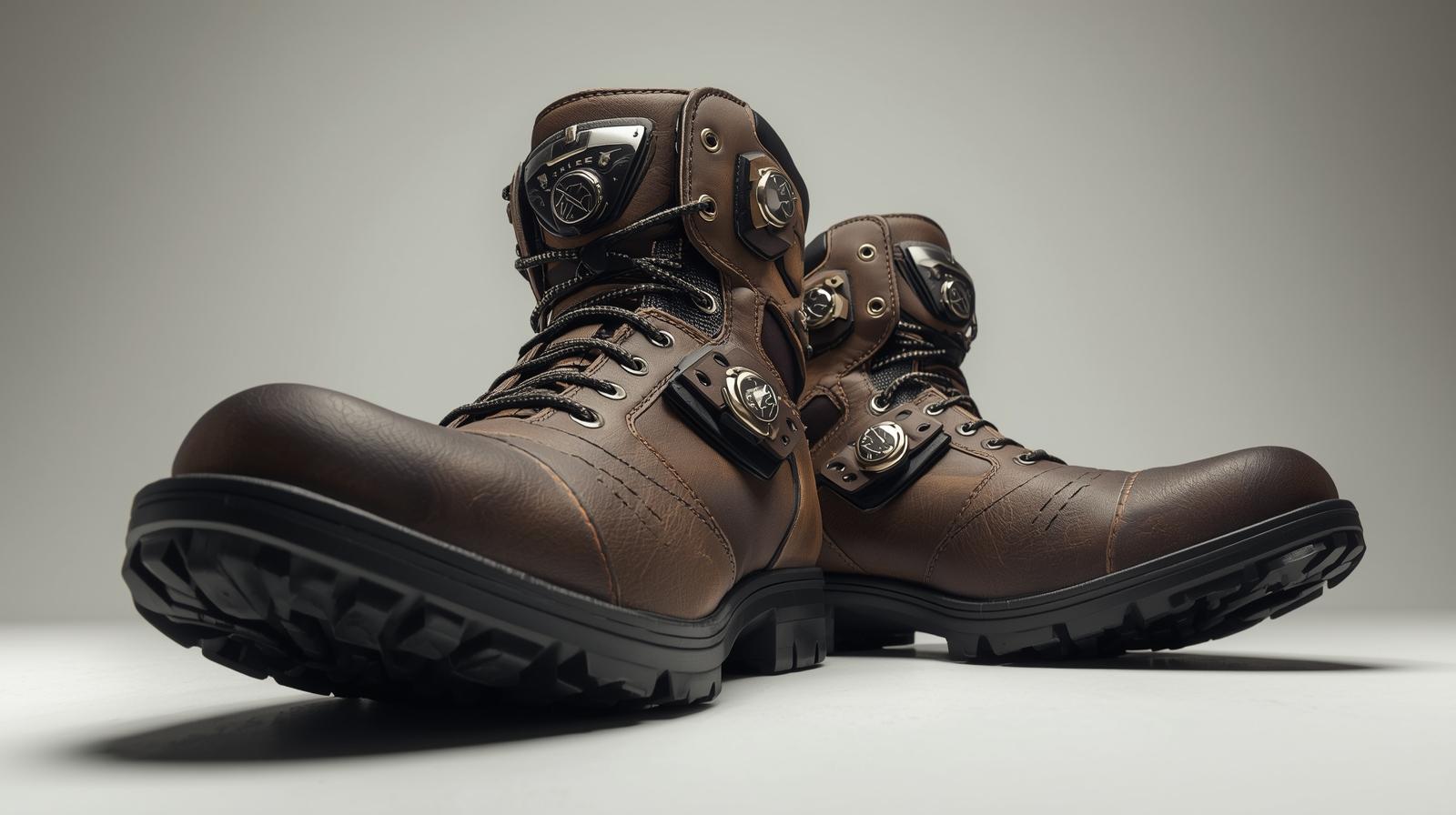Top Motorcycle Shoes: Expert Guide to Choosing Right

The difference between an average ride and a great one often comes down to footwear. Riders usually ignore how critical proper shoes are for safety. A single slip during cornering or foot pain halfway through destroys enjoyment. This guide breaks down everything about selecting the best motorcycle shoes, identifying styles to avoid, and understanding real protection versus marketing hype.
Understanding Motorcycle Shoe Fundamentals
Standard athletic shoes and flip-flops lack structural reinforcement needed for bike control. Best riding shoes for motorcycle applications feature reinforced ankles and oil-resistant soles. They provide strategic padding where shifters and brake levers make contact constantly.
Motorcycle shoes must protect while maintaining the tactile feedback riders absolutely need. Standard feedback helps riders feel gear changes and brake modulation precisely. The heel experiences tremendous stress during braking and hard stops. The inner ankle faces potential injury during aggressive cornering and tip-overs.
Quality construction in these zones separates mediocre from legitimate protective equipment truly.
For complementary protection, explore motorcycle safety pants for comprehensive lower-body coverage always.
The Characteristics of Most Comfortable Motorcycle Shoes
Comfort represents the result of thoughtful engineering across multiple design elements carefully. Most comfortable motorcycle shoes combine memory foam with adequate arch support always. They allow riders to maintain control during long sessions without developing pain.
The upper material breathes sufficiently to prevent moisture buildup during warm rides. Insulation provides warmth during cooler months and unpredictable weather conditions. Forward foot boxes prevent toes from curling awkwardly on narrow footpegs. Weight distribution across the sole maintains balance without creating calf fatigue. Many riders discover that genuine comfort comes from breaking shoes gradually.
Furthermore, good motorcycle shoes feature ankle collars that articulate with leg movement. Premium options include moisture-wicking liners that regulate temperature and reduce odor. The insole construction should support the arch adequately without creating foot tension. Proper support maintains circulation and prevents cramping during extended riding sessions.
Critical Features to Demand in Quality Footwear
Experienced riders understand that certain features separate protective gear from casual footwear. Reinforced shifter pads made from Kevlar resist constant abrading from shifters. Oil-resistant rubber soles prevent slipping on petrol-contaminated floors and wet tarmac.
Ankle reinforcement typically includes molded plastic overlays or double-stitched leather panels. These protect against deflection injuries during crashes and emergency maneuvers. The heel cup requires structured support to handle intense braking forces safely. The midfoot area needs lateral support to prevent excessive pronation when cornering.
Closure systems deserve careful evaluation beyond simple visual inspection and aesthetic appeal. Laces offer customizable fit but risk coming undone during rides. Modern options increasingly feature quick-release closures and velcro straps for functionality. The material composition matters significantly with full-grain leather offering superior durability. Split leather and mesh combinations compromise longevity compared to quality full-grain options.
What Shoes Should You Wear on a Motorcycle: Style Categories Explained
Understanding footwear categories helps riders select appropriate options for specific riding needs. Racing-oriented designs prioritize ankle protection and shifter durability over comfort concerns. Cruiser-specific models emphasize cushioning and style but accept protective compromises. Adventure and touring options balance protection with comfort for extended wear periods.
Urban commuting shoes focus on practical protection while maintaining appearance for offices. Touring models incorporate additional arch support specifically engineered for multi-day riding adventures. Sport touring options blend road performance with highway comfort effectively and reliably.
What shoes should you wear on a motorcycle ultimately depends on riding frequency. Personal priorities regarding protection versus comfort trade-offs matter significantly in selection processes.
Styles and Models to Avoid: Lessons from Failed Designs
Identifying inferior options prevents disappointment and wasted investment on poorly constructed products. Overly flexible soles while comfortable for walking fail to provide support. Thin ankle collars offer minimal protection despite marketing claims suggesting otherwise. Poorly positioned shifter pads shift during wear creating uneven and inadequate protection.
Mesh-heavy designs prioritize ventilation over protection leaving feet vulnerable during accidents. Heavy-soled options designed for hiking perform terribly on footpegs honestly. Excessively stiff shoes resist breaking in remaining uncomfortable even after extended usage. Watch for discontinuation patterns because manufacturers frequently abandon successful models permanently. Replacement parts and repairs become impossible years later affecting long-term ownership.
Products featuring inadequate heel reinforcement demonstrate failure within months of regular riding. Cheap construction reveals itself through premature zipper failures and sole separation. Seam splitting accelerates degradation and compromises protective integrity of the entire shoe. For riders seeking comprehensive protection alongside footwear, rain pants motorcycle options complement shoe selection during adverse weather conditions.
Making the Investment: Budget Considerations and Value Assessment
Price doesn’t automatically correlate with protection or comfort in motorcycle footwear. Intermediate-tier options frequently deliver superior value compared to budget alternatives. Quality footwear typically ranges from $120 to $300 depending on features. Entry-level protective shoes sometimes sacrifice too much in durability and comfort. Premium options occasionally overcharge for brand reputation without corresponding performance improvements honestly.
Longevity considerations affect actual cost-per-wear calculations significantly and substantially. Shoes lasting three years with maintenance offer better value than budget options. Professional resolving and conditioning treatments extend functional lifespans considerably beyond typical expectations. Calculating investment against riding frequency helps determine appropriate spending levels individually.
Authentication concerns affect purchasing decisions increasingly through online retailers and discount platforms. Counterfeit motorcycle gear features substandard materials and compromised construction that fails dangerously. Purchasing from authorized retailers ensures access to warranty support and guarantees. Best motorcycle rain suit options should similarly prioritize authorized sources for protection reliability.
Installation and Maintenance for Extended Lifespan
Proper maintenance practices dramatically extend functional lifespans and maintain protective integrity completely. Regular cleaning removes salt dirt and corrosive materials that accelerate degradation. Air drying prevents material shrinkage and maintains structural integrity of boots. Conditioning treatments keep leather supple and water-resistant preventing damaging cracks.
Sole inspection should occur regularly with professional repairs addressing separations immediately. Water ingress causes irreversible damage to internal foam and cushioning materials. Insoles may require replacement independently if cushioning deteriorates faster than materials. Lace inspection prevents unexpected failure during critical riding moments and emergencies. Storing shoes in cool conditions between seasons maintains material properties permanently.
These practices transform quality footwear into genuine long-term investments worth maintaining. Riders who maintain equipment properly frequently exceed manufacturer durability expectations by percentages. Maintenance discipline makes choosing quality options financially worthwhile over extended periods.
Essential FAQs About Motorcycle Footwear
- What distinguishes motorcycle shoes from regular hiking or safety boots exactly?
Motorcycle designs include shifter pads and toe box geometry for footpeg control. Regular boots lack these elements and compromise bike control through poor positioning.
- How important is the breaking-in period for new motorcycle shoes overall?
Initial discomfort should resolve within five to ten regular riding sessions. Excessive discomfort beyond that timeframe suggests poor fit or inadequate design.
- Can motorcycle shoes serve dual purposes for off-bike activities comfortably?
Modern designs balance protection with casual styling but sacrifice some aesthetic appeal. Authentic protective shoes reduce comfort or style compared to specialized gear.
- What waterproofing methods work best for extended rain exposure realistically?
Quality waxed leather and explicit waterproof liners handle heavy rain better. Gortex-lined options provide breathing while maintaining water resistance over extended periods.
- How frequently should shifter pads require replacement with regular use?
Heavy riders in varied conditions see significant wear within two to three years. Lighter riders in stable patterns extend durability to five plus years easily. Professional reinforcement adds cost but often delivers superior long-term durability.
- Are expensive brands necessarily better protection investments for riders truly?
Mid-range established brands deliver superior value compared to premium heritage brands. Premium options charge primarily for brand reputation without matching performance improvements.



